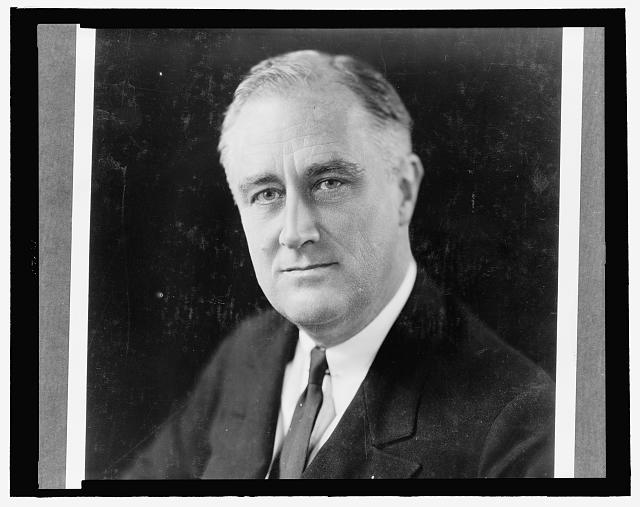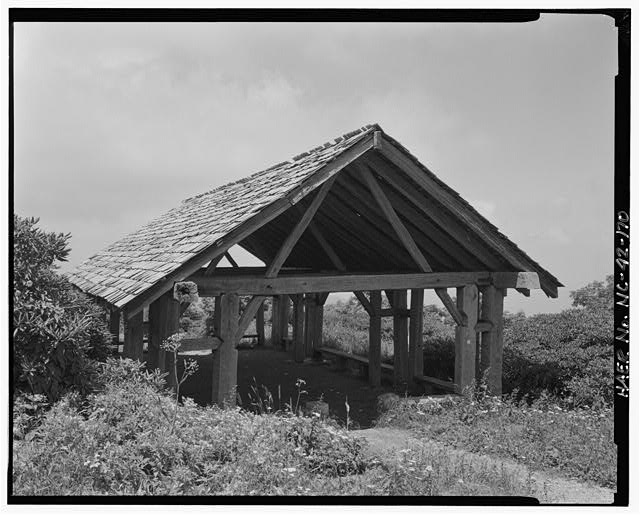Great Depression and the New Deal
by Joseph F. Steelman
Reprinted with permission from the Tar Heel Junior Historian. Spring 2010.
Tar Heel Junior Historian Association, NC Museum of History
See also: Great Depression; Public Schools in the Great Depression; 1920's; Agriculture During the Great Depression
![Library of Congress. "Red Cross: Fayetteville, N.C. Canteen Service." [Date created/published between 1910-1920].](/sites/default/files/RedCross%20LOC.jpg) "A New Deal for the American People"
"A New Deal for the American People"
The decade that followed World War I, 1919 through 1929, has often been called an era of prosperity, the “roaring twenties”—a boom time for stock market gambling and speculation. Economists and political leaders of those years expected unending material growth and only a few questioned the giddy optimism of boosters and promoters. The stock market crash of October 1929 ended abruptly this age of promise and ushered in what we call the Great Depression. It was indeed the most severe economic crisis in American history, and recovery had not been accomplished fully by 1939 when World War II broke out in Europe.
Those who endured the Great Depression still have vivid memories of this trying time. The most poignant incidents that I can recall took place when destitute families from cotton mill towns— carrying their personal belongings in tattered suitcases and boxes—came by our family farm in western North Carolina begging for food and shelter. Unemployed and homeless, they hoped to join parents or relatives and somehow eke out a living from the land.
With millions of people jobless and desperate, charitable organizations such as the Salvation Army and the American Red Cross were soon unable to satisfy urgent needs. Private charities, church and civic groups, and the many who were compassionate toward human misery tried to offer relief, but it was never enough. As the Depression wore on, depositors lost their savings in banks that failed or closed; workers and suppliers could not be paid by bankrupt businesses; and many public servants were dismissed or not paid by state, county, and city agencies. Economic losses can hardly be calculated in monetary terms, and the social and psychological damages caused by such a prolonged crisis were staggering.
 While the federal government under President Herbert Hoover’s administration attempted to provide some work and financial relief, the effects of the Depression nonetheless worsened from 1929 to 1932. Clearly, more drastic measures were required to avert further tragedy. Amidst these circumstances Franklin D. Roosevelt was elected president in 1932, and with his inauguration the New Deal was launched in 1933.
While the federal government under President Herbert Hoover’s administration attempted to provide some work and financial relief, the effects of the Depression nonetheless worsened from 1929 to 1932. Clearly, more drastic measures were required to avert further tragedy. Amidst these circumstances Franklin D. Roosevelt was elected president in 1932, and with his inauguration the New Deal was launched in 1933.
 Roosevelt’s immediate goal was to provide relief in the form of food, clothing, and shelter to the needy. Oftentimes this relief came through an outright dole or monetary allowance. But the long-range objectives of his program called for public works projects to construct needed facilities like roads and sewers; the reduction of unemployment; and the stimulation of the economy. The scope and the extent of these endeavors continue to fascinate historians. For high school and college students the National Youth Administration provided part-time jobs that enabled thousands to complete their education. It was my privilege to work in this program at the University of North Carolina at Chapel Hill. The Civilian Conservation Corps employed young men in reforestation efforts, conservation work, and in the construction and landscaping of the Blue Ridge Parkway. The North Carolina Symphony was launched as a work-relief opportunity for musicians. Historians, poets, playwrights, and artists in North Carolina were engaged in creative activity that left enduring legacies for future generations. Laborers erected school and college buildings, courthouses, town halls, streets, sidewalks, waterworks, roads, and airports. A commonplace sign that was proudly displayed during this time announced “MEN WORKING.”
Roosevelt’s immediate goal was to provide relief in the form of food, clothing, and shelter to the needy. Oftentimes this relief came through an outright dole or monetary allowance. But the long-range objectives of his program called for public works projects to construct needed facilities like roads and sewers; the reduction of unemployment; and the stimulation of the economy. The scope and the extent of these endeavors continue to fascinate historians. For high school and college students the National Youth Administration provided part-time jobs that enabled thousands to complete their education. It was my privilege to work in this program at the University of North Carolina at Chapel Hill. The Civilian Conservation Corps employed young men in reforestation efforts, conservation work, and in the construction and landscaping of the Blue Ridge Parkway. The North Carolina Symphony was launched as a work-relief opportunity for musicians. Historians, poets, playwrights, and artists in North Carolina were engaged in creative activity that left enduring legacies for future generations. Laborers erected school and college buildings, courthouses, town halls, streets, sidewalks, waterworks, roads, and airports. A commonplace sign that was proudly displayed during this time announced “MEN WORKING.”
In order to achieve relief, recovery, and reform, the New Deal assisted farmers to control crop production, conserve soil, and boost prices. It brought rural electrification to most of the state. Through loans to businesses, it prevented inevitable bankruptcies. When banks finally reopened, the accounts of their depositors were insured against failures. The rights of workers to organize and bargain collectively in unions were protected, and wage-and-hour legislation enhanced their earnings. With the passage of Social Security legislation, important benefits were provided to unemployed, disabled, aged, and retired workers. Altogether, the changes secured in the New Deal were among the most profound in American history. It is therefore appropriate that this phase of our past be marked for study and reflection.
*At the time of this article’s publication, Joseph F. Steelman was professor of history emeritus at East Carolina University.
 Educator Resources:
Educator Resources:
Grade 8: Great Depression. North Carolina Civic Education Consortium.
http://civics.sites.unc.edu/files/2012/04/GreatDepression.pdf
Additional Resources:
Library of Congress, The Great Depression in North Carolina, Experiences of the People (a lesson plan): http://www.loc.gov/teachers/classroommaterials/lessons/newdeal/
The Gaston-Lincoln Library, Research Guides: The Great Depression: Life in Hard Times, 1929-1942:http://www.glrl.lib.nc.us/lrgs/greatdepression.htm
News Record, Greensboro, NC, The Great Depression Timeline: http://www.news-record.com/content/2009/01/04/article/great_depression_t...
North Carolina History Project, New Deal Govenors: http://www.northcarolinahistory.org/commentary/35/entry
My State History, The Great Depression Levels, North Carolina: http://mystatehistory.com/nc/nc_book/ch_12_2.pdf
LearnNC: The Effects of the Great Depression in NC: http://www.learnnc.org/lp/pages/2923
Image Credits:
Library of Congress. "View of large trail shelter built for the United States Forest Service by the Civilian Conservation Corps in 1938 on Craggy Knob. Facing northwest. - Blue Ridge Parkway, Between Shenandoah National Park & Great Smoky Mountains, Asheville, Buncombe County, NC." Located at http://www.loc.gov/pictures/item/nc0478.photos.345870p/. Accessed March 5, 2012.
Library of Congress. "Herbert Hoover signing the Farm Relief Bill, with nine other men standing alongside and behind him." June 15, 1929. Located at http://www.loc.gov/pictures/item/94509154/. Accessed March 5, 2012.
Library of Congress. "Franklin Delano Roosevelt, head-and-shoulders portrait, facing slightly left." December 27, c1933. Located at http://www.loc.gov/pictures/item/96523441/. Accessed March 5, 2012.
Library of Congress. "Red Cross: Fayetteville, N.C. Canteen Service." [Date created/published between 1910-1920]. Located at: http://www.loc.gov/pictures/item/hec2009000704/. Accessed March 5, 2012.
1 January 2010 | Steelman, Joseph F.